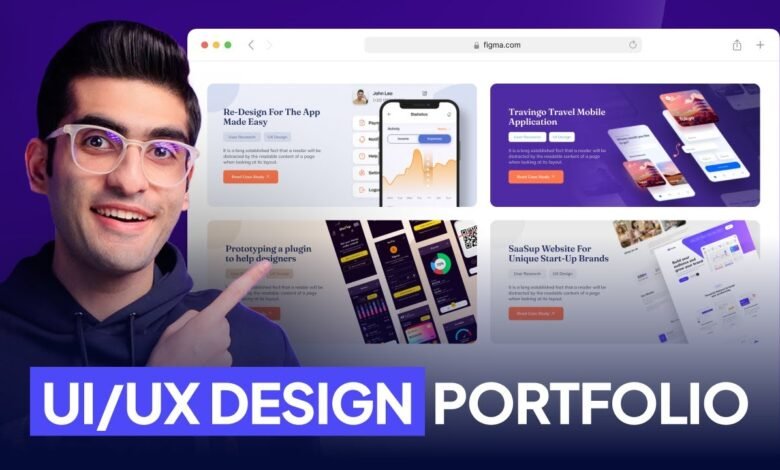How to Create an Effective UI/UX Design Portfolio?

It is important to argue that a design portfolio is one of the primary means of demonstrating one’s competencies in UX/UI and obtaining one’s ideal position. The portfolio is proof of your skills in solving different design issues, how you use UI UX designs to create an effective portfolio, and what tools and technologies you use.
This article will help you to define the necessary steps to make an unforgettable portfolio with a focus on UI/UX design, as well as to explain this term, how it is used in various fields, and why is it important today especially with the focus on such market as UI UX design in Germany.
Purpose of a UX/UI Design Portfolio:
A UI UX design portfolio is an extended resume for both a job holder or a company, which means that the main purpose of its creation is to demonstrate a designer’s skills and thus, make it easier for the holder to find work or convince the users before hiring you to get your services with your portfolio.
When looking for a job, or trying to catch an employer’s attention, a well-designed and thought-out portfolio can easily help one differentiate himself from the competition and demonstrate not only the result but the designing process and reasoning behind it as well. When a particular niche is identified such as UI UX design in Germany it may be necessary to design and create a portfolio that will be fitting to the region’s standards.
Steps to Create an Effective UX/UI Design Portfolio:
Select Your Best Work:
- Select activities that would help you to implement diverse tasks that would illustrate your ability to work in the UI UX design field. Some of the important areas that need to be covered are the demonstration of your problem-solving skills as well as your versatility in terms of the tools and processes used in the design industry.
- Remember that it is better to have less and have quality. As amusing as it may sound, quality over quantity is significantly preferable especially when it comes to projects.
Tell a Story:
- Every work that is in your portfolio should have a narrative to it. Explain the issue that needed to be addressed, what kind of research was carried out, the basic steps in the design, and the results achieved. This narrative enables the potential employer to grasp your way of handling UI UX design and your analytical ability.
- All stories should be illustrated with appropriate pictures. It is important to add sketches, wireframes, prototypes, and the final design of the process you have used.
Showcase Your Process:
- It emphasizes the process followed more than the result, or how you as the employer arrived at that particular solution. Record all aspects of the design journey in as much detail as possible regarding the users, the concepts, models, samples, trials, and improvements.
- Specify any difficulties encountered during writing the paper and how it was solved. This shows your problem-solving as well as your persistence.
Emphasize Your Strengths and Solutions:
- Always highlight the tools and technologies used in each of the projects. It demonstrates that you possess familiarity with the tools widely used in the industry and your capacity to acquire new ones.
- List down all the related competencies like understanding user needs, defining information structure, designing interaction, creating aesthetics and graphic interface, and evaluation of interfaces.
Market Your Portfolio to the right Market
- If for example, you are aiming for the UI UX design niche in Germany, ensure your portfolio fits the market’s demand and expectations. study the market’s employer requirements and provide information about relevant experience and skills expected in that market.
- If you are applying for jobs or providing services to your users in a country where the language spoken is not English then it could be effective to translate your portfolio into that language.





